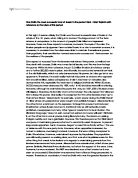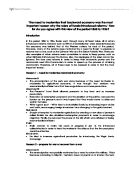Stalin was more successful in modernising Russias economy than either the Tsars or Lenin between 1855-1956. How far is this a valid assessment?
“Stalin was more successful in modernising Russia’s economy than either the Tsars or Lenin between 1855-1956. “ How far is this a valid assessment?
Over the time period 1855-1956, Russia underwent hugely dramatic changes, in such a relatively short amount of time the country and its people was ruled by different groups and people, with different ideologies and stances and the economy, and more specifically industrialization. Although on the face of things, it is obviously apparent that Stalin was the most successful at achieving a “ modernised economy “, the context of the situation he inherited and manipulated was unique, and this modernisation came at great cost. Stalin and Lenin both built on the structure that the Tsars created, although it was not nearly enough to stabilize Russia’s economy, it was a start.
Before explaining what impact each of these individuals had on the economy, it is important to understand the background of Russia’s economy, both agricultural and industrial. One of the most startling features of Russia at this point, was its size, and ironically how this size and potential was not being properly utilized. Communications across this huge area were extremely poor; roads outside the big cities were poor at best. The vast majority of Russia population at this point, were the serfs (making up around 70-75% of Russia’s total population). Serfs were virtually owned by their masters, they did what they were told and had little or no free will, the vast amount of surfs working in agriculture. It would be assumed that because there was so much emphasis on agriculture and so many numbers behind it that agricultural input would have been high, but in fact, the opposite was true. The state of agriculture in Russia in 1855 was abysmal; the method of farming was backward so efficiency levels were extremely poor, the strip system and wooden ploughs were still used, and there was not enough land for each serf. Concerning industry, there was a low level of this also considering the size of Russia, because the majority of the working population lived rurally, urban factories and workers had only a limited amount of available work. In 1855, it is safe to say that Russia’s economy needed a kick start; it was starting to become left behind and was being outranked by the other world powers.







